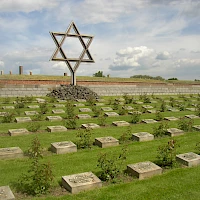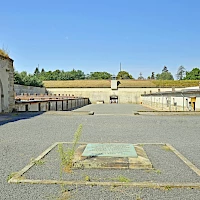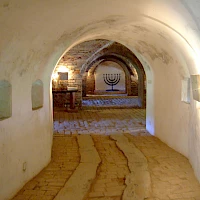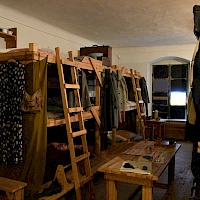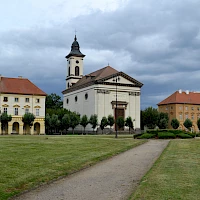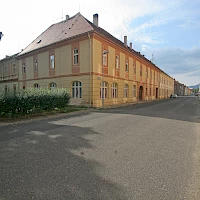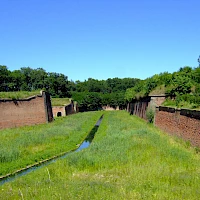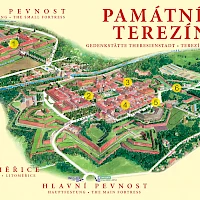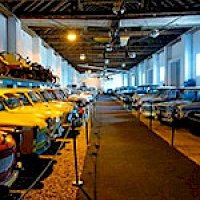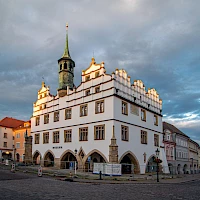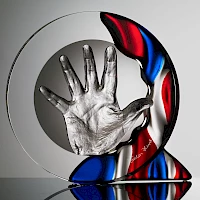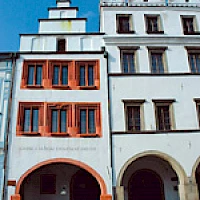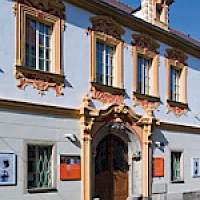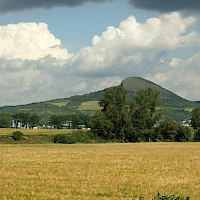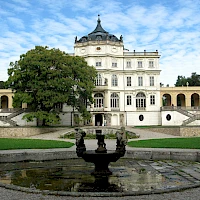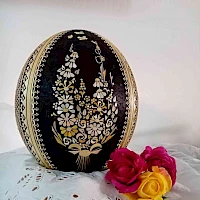Theresienstadt (Terezín) was built from 1780 under Emperor Joseph II as a fortress town and named after his mother Maria Theresia. At the same time, a sister town, Josephstadt (Josefov) near Hradec Králové, was built.
From 1941 to 1945 Theresienstadt was used as a concentration camp. The actual city was turned into a ghetto for Jews, mainly from the Protectorate of Bohemia and Moravia, while the so-called Small Fortress, a defensive structure to the east, was used by the Gestapo as a prison. Theresienstadt achieved its inglorious fame due to the ghetto, which held an exceptional position in the National Socialist system of extermination. It was planned as a "showpiece" of a collection and transit camp and as a "retirement ghetto". In the course of its existence, around 140,000 people lived in the Theresienstadt concentration camp. There was Jewish self-government in the ghetto, the children were given a certain education (both officially and secretly), cultural events took place, and people did various jobs. The Nazis successfully persuaded the public - including the international public - that the people in Theresienstadt led a completely normal life.
After the war, Theresienstadt was used as a garrison location by the Red Army. Since their departure, the city has been trying to shake off its negative image and find a way into the future. But that turns out to be very difficult. There is little life in the city, it is mostly inhabited by people with low incomes, and the building fabric continues to deteriorate.
What is particularly impressive about Theresienstadt is that the city has hardly experienced any structural changes after the ghetto period (apart from progressive decay). Walking through the streets today, one has the feeling of stepping back into the ghetto, even if it takes a lot of imagination to imagine the streets, which are very empty today, in the overcrowded ghetto days. The whole city is a museum.
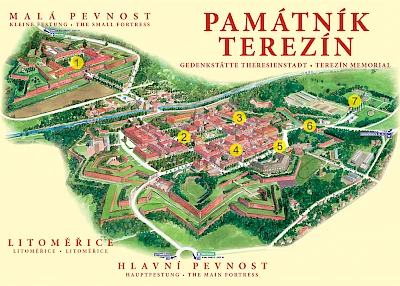
The Theresienstadt Memorial consists of the Small Fortress on the one hand and several museum sites in the city on the other (see map on the right and below). If you want to visit the ghetto, it is worth starting at the Ghetto Museum or the Magdeburg Barracks and taking information material with you there.
1. Small Fortress with National Cemetery
In the Small Fortress there are exhibitions on the use as a Gestapo prison, but also on other topics of Nazi terror and on the use as an internment camp for Germans between 1945 and 1948.
2. Ghetto Museum
In the Ghetto Museum, the ground floor is dedicated to the children of the ghetto, while the upper floor shows the persecution of the Jews in the Protectorate, the founding of the ghetto and life there, and the transports to labor and extermination camps.
3. Magdeburg barracks
There are several exhibitions dedicated to art and culture in the ghetto. For example, Jewish composers created famous works in Theresienstadt. Furthermore, a typical dormitory of the overcrowded ghetto was reconstructed in the Magdeburg barracks. Last but not least, you can visit an exhibition about the shooting of a propaganda film in September 1944.
4. Jewish prayer room and replica of a mansard
In a backyard you will find a small prayer room, which stands out from similar places in the ghetto thanks to its professional murals and texts. A small room can be visited above it, which served as a temporary shelter for special cases.
5. Transports
In the former weighing station there is an exhibition about the National Socialist system of transports to the camps.
6. Columbarium, Ceremonial Rooms and Central Mortuary
Rooms were set up in the ramparts to hold ceremonies for the deceased and to store the remains of the cremated corpses.
7. Crematorium with a Jewish cemetery
The crematorium was outside the fortifications. It contains an exhibition about death and burials in the ghetto. Four ovens, the morgue and an autopsy room can still be visited today.

